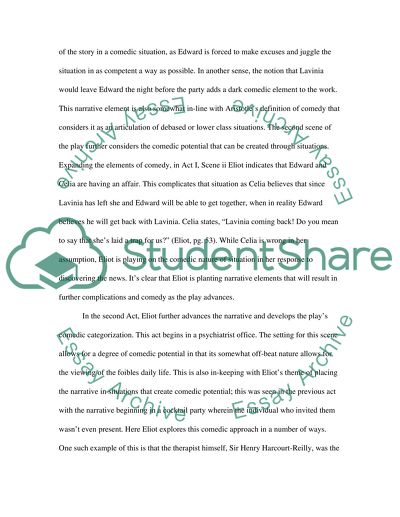Cite this document
(“The Cocktail Party T.S. Eliot Essay Example | Topics and Well Written Essays - 1250 words - 1”, n.d.)
Retrieved from https://studentshare.org/literature/1577402-the-cocktail-party-ts-eliot
Retrieved from https://studentshare.org/literature/1577402-the-cocktail-party-ts-eliot
(The Cocktail Party T.S. Eliot Essay Example | Topics and Well Written Essays - 1250 Words - 1)
https://studentshare.org/literature/1577402-the-cocktail-party-ts-eliot.
https://studentshare.org/literature/1577402-the-cocktail-party-ts-eliot.
“The Cocktail Party T.S. Eliot Essay Example | Topics and Well Written Essays - 1250 Words - 1”, n.d. https://studentshare.org/literature/1577402-the-cocktail-party-ts-eliot.


